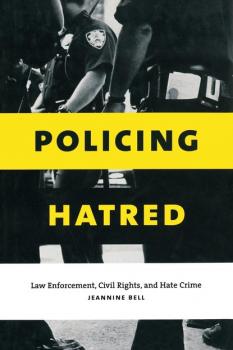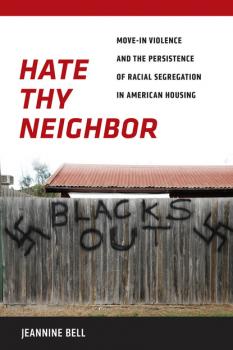ТОП просматриваемых книг сайта:
Jeannine Bell
Список книг автора Jeannine BellАннотация
Policing Hatred explores the intersection of race and law enforcement in the controversial area of hate crime. The nation’s attention has recently been focused on high-profile hate crimes such as the dragging death of James Byrd and the torture-murder of Matthew Shepard. This book calls attention to the thousands of other individuals who each year are attacked because of their race, religion, or sexual orientation. The study of hate crimes challenges common assumptions regarding perpetrators and victims: most of the accused tend to be white, while most of their victims are not. Policing Hatred is an in-depth ethnographic study of how hate crime law works in practice, from the perspective of those enforcing it. It examines the ways in which the police handle bias crimes, and the social impact of those efforts. Bell exposes the power that law enforcement personnel have to influence the social environment by showing how they determine whether an incident will be charged as a bias crime. Drawing on her unprecedented access to a police hate crime unit, Bell’s work brings to life the stories of female, Black, Latino, and Asian American detectives, in addition to those of their white male counterparts. Policing Hatred also explores the impact of victim’s identity on each officers handling of bias crimes and addresses how the police treat defendants’ First Amendment rights. Bell’s vivid evidence from the field argues persuasively for the need to have the police diligently address even low-level offenses, such as vandalism, given their devastating cumulative effects on society.
Информация о книге
Автор произведения Jeannine Bell
Жанр Юриспруденция, право
Серия Critical America
Аннотация
Despite increasingracial tolerance and national diversity, neighborhood segregation remains avery real problem in cities across America. Scholars, government officials, andthe general public have long attempted to understand why segregation persistsdespite efforts to combat it, traditionally focusing on the issue of “whiteflight,” or the idea that white residents will move to other areas if theirneighborhood becomes integrated. In HateThy Neighbor, Jeannine Bell expands upon these understandings byinvestigating a little-examined but surprisingly prevalent problem of “move-inviolence:” the anti-integration violence directed by white residents atminorities who move into their neighborhoods. Apprehensive about their newneighbors and worried about declining property values, these residents resortto extra-legal violence and intimidation tactics, often using vandalism andverbal harassment to combat what they view as a violation of their territory. Hate Thy Neighbor is the first work to seriously examine therole violence plays in maintaining housing segregation, illustrating howintimidation and fear are employed to force minorities back into separateneighborhoods and prevent meaningful integration. Drawing on evidence thatincludes in-depth interviews with ordinary citizens and analysis of FairHousing Act cases, Bell provides a moving examination of how neighborhoodracial violence is enabled today and how it harms not only the victims, butentire communities. By finally sheddinglight on this disturbing phenomenon, HateThy Neighbor not only enhances our understanding of how prevalentsegregation and this type of hate-crime remain, but also offers insightfulanalysis of a complex mix of remedies that can work to address this difficultproblem.


